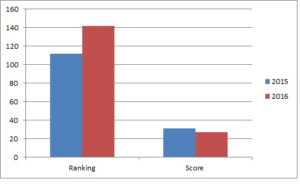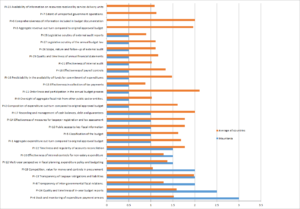Developing Systems to Combat Corruption

Posted by David Fellows[1]
Introducing the concept of “objective data”
In March 2018, we republished a short note on the use of objective data to combat corruption [2]. The piece highlighted statistical techniques being used in western countries to identify corruption by correlating unorthodox procurement practices with aberrant supplier behaviour established from factually based ‘objective’ administrative data. It was suggested that less complex approaches to the analysis of ‘objective’ data could be used to indicate the need for further forensic examination of officials, suppliers, and politicians. The emphasis was on finding workable approaches for developing countries that were compatible with the available resources.
The term ‘objective’ data refers to factual information derived from official government records. It represents data on transactions, activity schedules, and personal information, recorded through established processes, that give the information credibility. This contrasts with ‘subjective’ data which is often based on opinions or experience that is poorly evidenced and of limited application, as is the case with corruption perception surveys.
Frequent use of objective data
Objective data is checked and compared in dozens of administrative processes which can produce anomalies that may indicate the presence of corruption. For example, invoices are checked against orders and goods received notes or contract certificates, or payroll submissions are checked against timesheets. In addition, national bodies charged with the oversight of public administration – such as supreme audit institutions and public procurement commissions – are routinely engaged in the examination of objective data which can also lead to the identification of corruption.
Such findings are then included in published reports that may be used to identify process deficiencies or potentially to prosecute cases of fraud and corruption. These oversight functions can be particularly effective when they are invested with independence from government, extensive powers of enquiry, transparency of reporting, and due consideration of findings.
Developing objective administrative data systems
Apart from routine scrutiny provided by administrative processes and oversight arrangements, programs of administrative reform provide excellent opportunities for the development of systems that incorporate the automatic validation and cross-referencing of administrative data to help identify patterns of corrupt activity.
Such arrangements are straightforward, well known, and remarkably simple to put into effect but in practice they are rarely complete or well executed. Too often there is a lack of expectation that good administration will have a beneficial effect. This places a premium on those who hold relevant managerial roles, requiring them to value high standards of administrative practice; exercise oversight responsibilities courageously, insightfully and in partnership with others as necessary; and ensure that reform opportunities are used to best effect. Well prepared and committed management is a prerequisite to any well-intentioned anti-corruption initiative.
Objective administrative data applications
Some examples of objective administrative data and its use to combat corruption are included in an Appendix available here.
The use of objective data could also be developed in other ways. For example:
- Countries could prepare anti-corruption strategies that include the use and development of objective data and staff training. Such strategies should be accompanied by operational guidance. Anti-corruption strategies and related material are often referred to as being part of the standard anti-corruption armoury but are rarely made available. In practice, however, few of these documents have been produced to a reasonable standard anywhere in the developing world, and perhaps it is time to redress this omission.
- Additionally, collaboration between states, perhaps on a regional basis, could be helpful in developing techniques for interrogating data, preparing anti-corruption strategies, sharing knowledge of corrupt practices, and building operational cooperation between countries
- Consideration should also be given by multilateral agencies and regional representative bodies to the development of an international systems assessment schema (akin to PEFA methodology[3]) that would indicate the efficacy and shortcomings of individual administrative systems for the purposes of combatting corruption.
This article is written with government administration in mind, but similar considerations apply to local governments and state-owned enterprises.
[1] Director, PFMConnect. The author thanks John Leonardo for his helpful comments.
[2] This blog was first published at http://blog-pfm.imf.org/pfmblog/2018/03/how-useful-are-perception-indices-of-corruption-to-developing-countries.html
[3] See https://pefa.org/sites/default/files/PEFA%20Framework_English.pdf


